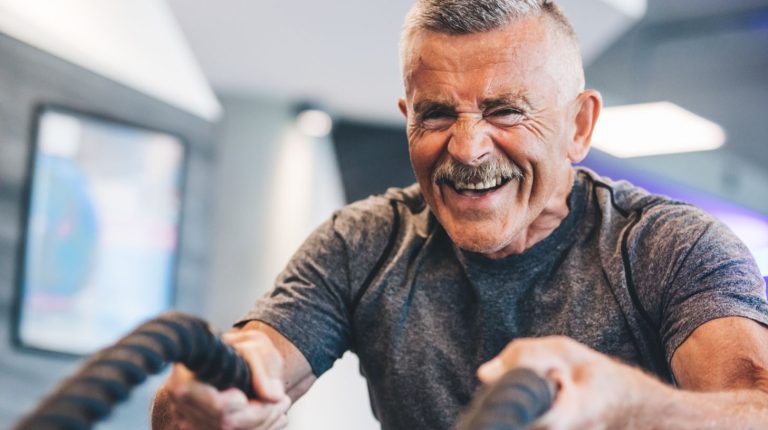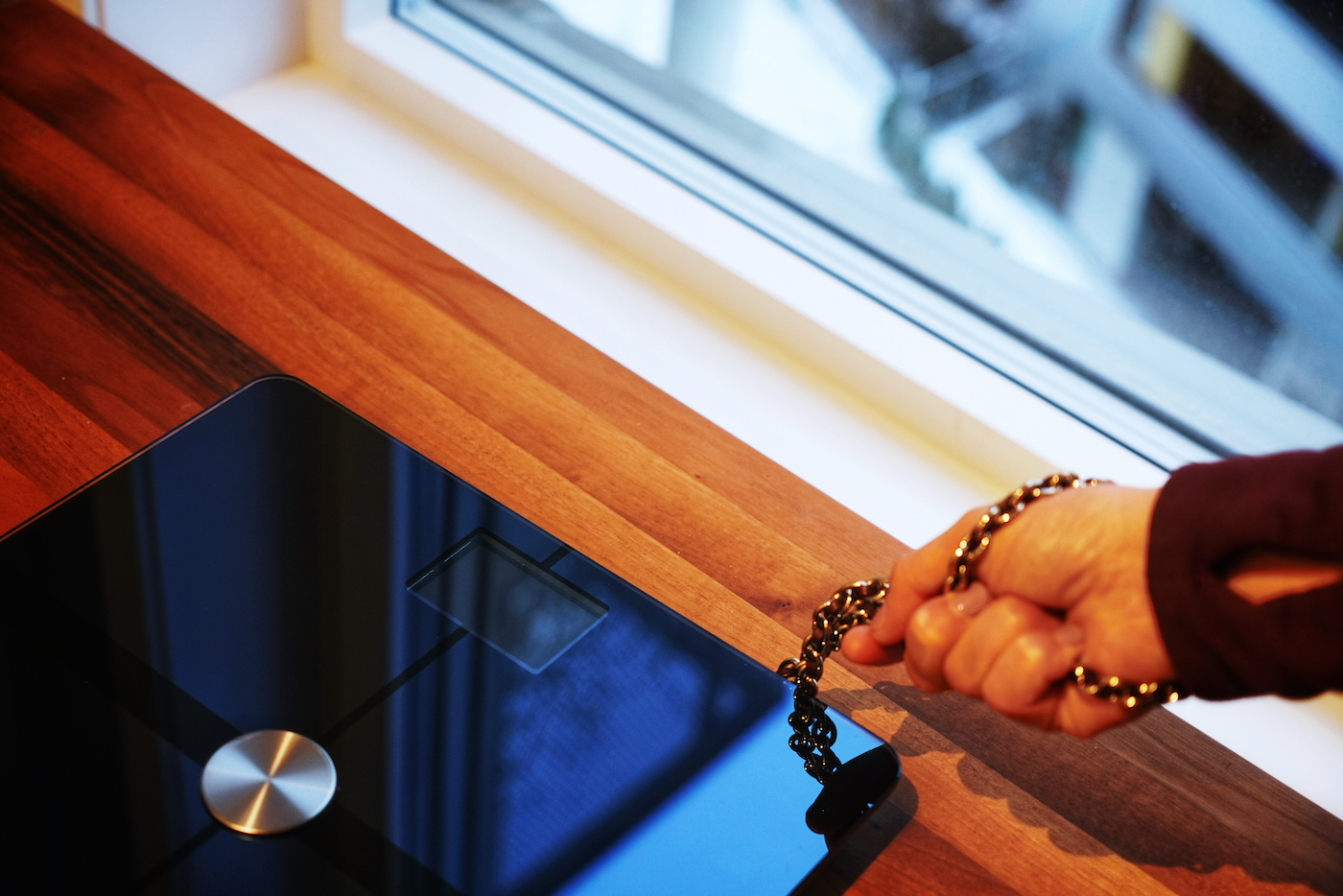Building a Strong Foundation: Top Core Exercises for Runners
Table of Contents
Importance of Core Strength for Runners
To become a stronger and more efficient runner, developing core strength is essential. A strong core provides stability and support to your body, allowing you to maintain proper running form and generate more power with each stride. In this section, we will explore how core strength impacts running performance and the benefits of incorporating core exercises into your training routine.
How Core Strength Impacts Running Performance
Your core muscles, which include the muscles of your abdomen, lower back, hips, and pelvis, play a crucial role in running. A strong core helps to stabilize your spine, maintain good posture, and transfer force between your upper and lower body. Here are a few ways core strength impacts your running performance:
- Improved Stability: A strong core enhances your stability, reducing the risk of injury and helping you maintain balance while running on uneven surfaces or during sudden changes in direction.
- Better Running Form: Core strength helps you maintain proper alignment and posture during running, preventing excessive pelvic tilt and excessive rotation of the torso. This allows for more efficient movement and reduces the strain on other muscles.
- Increased Power: A strong core allows for better force transfer from your lower body to your upper body and vice versa. This translates to more powerful strides and improved running speed.
- Reduced Fatigue: By improving your core strength, you can better maintain your running form and posture throughout your run. This reduces the strain on other muscles, delaying the onset of fatigue and helping you run longer distances.
Benefits of Incorporating Core Exercises into Your Training Routine
Incorporating core exercises into your training routine offers numerous benefits for runners. Here are some key advantages:
- Injury Prevention: A strong core provides stability and reduces imbalances, decreasing the risk of common running injuries such as IT band syndrome, shin splints, and lower back pain.
- Improved Performance: Strengthening your core muscles allows you to generate more power and maintain proper form, leading to improved running efficiency and faster race times.
- Enhanced Endurance: A strong core helps you maintain good running posture, reducing the strain on your muscles and allowing you to run longer distances with less fatigue.
- Better Balance: Core exercises improve your balance and body awareness, which can be particularly beneficial for trail runners or those navigating challenging terrains.
By incorporating core exercises into your running routine, you can maximize your running potential and reduce the risk of injuries. Aim to include core workouts at least two to three times a week alongside your running schedule. For more information on strength training for runners, check out our article on strength training for runners. Remember to always prioritize proper form and gradually progress the intensity of your exercises to avoid overexertion.
Plank Variations
When it comes to building a strong core, plank exercises are a go-to choice for runners. Planks engage multiple muscles in your core, including your abdominals, obliques, and lower back. These exercises help improve stability, posture, and overall running performance. In this section, we will explore three effective plank variations: the standard plank, the side plank, and the plank with leg lifts.
Standard Plank
The standard plank is a foundational exercise that targets your entire core. To perform a standard plank:
- Start by positioning yourself face down on the floor, supporting your body weight on your forearms and toes.
- Keep your elbows directly beneath your shoulders and form a straight line from your head to your heels.
- Engage your core muscles by imagining you’re pulling your belly button towards your spine.
- Hold this position for a specific duration, such as 30 seconds or longer, focusing on maintaining proper form throughout.
The standard plank is an excellent exercise for improving core stability and endurance. It also engages your glutes, shoulders, and leg muscles, making it a comprehensive exercise for strengthening your entire body.
Side Plank
The side plank targets the muscles on the side of your core, particularly the obliques. To perform a side plank:
- Lie on your side with your legs extended and stacked on top of each other.
- Prop yourself up on your forearm, ensuring your elbow is directly beneath your shoulder.
- Lift your hips off the ground, forming a straight line from your head to your feet.
- Engage your core and hold this position for a specific duration, such as 30 seconds or longer, focusing on maintaining proper alignment.
The side plank is an effective exercise for improving lateral stability, which is essential for maintaining proper running form and preventing injuries.
Plank with Leg Lifts
The plank with leg lifts adds an extra challenge to the standard plank by incorporating leg movements. To perform the plank with leg lifts:
- Begin in a standard plank position with your forearms on the ground and your body in a straight line.
- Engage your core and lift one leg off the ground, keeping it straight and parallel to the floor.
- Hold this position for a few seconds, then lower your leg back down.
- Repeat the movement with the opposite leg, alternating sides for a specific number of repetitions.
By adding leg lifts to the plank, you engage additional muscles in your hips, glutes, and thighs, which are important for stability and power while running.
Incorporating these plank variations into your regular strength training routine can help you develop a strong and stable core, which is crucial for optimal running performance. Remember to maintain proper form and gradually increase the intensity and duration of your planks over time. For more tips on strength training for runners, check out our article on strength training for runners.
Bridge Exercises
To build a strong core foundation for your running, incorporating bridge exercises into your routine can be highly beneficial. Bridge exercises target the glutes, hamstrings, and lower back muscles, helping to improve stability, power, and overall running performance.
Glute Bridge
The glute bridge is a fundamental exercise that activates the glute muscles and strengthens the posterior chain. To perform this exercise:
- Lie on your back with your knees bent and feet flat on the ground, hip-width apart.
- Engage your core and glutes, then lift your hips off the ground until your body forms a straight line from your shoulders to your knees.
- Hold the position for a few seconds, then slowly lower your hips back down to the starting position.
| Muscles Targeted |
|---|
| Glutes |
| Hamstrings |
| Lower back |
Single Leg Bridge
The single leg bridge is a progression of the glute bridge that adds an extra challenge by focusing on one leg at a time. This exercise helps to improve stability and balance while targeting the glutes and hamstrings. Here’s how to perform it:
- Begin in the same starting position as the glute bridge.
- Lift one leg off the ground, extending it straight out in front of you.
- Engage your core and glutes, then lift your hips off the ground while keeping the extended leg in line with your other knee.
- Hold the position for a few seconds, then lower your hips back down.
- Repeat the exercise with the opposite leg.
| Muscles Targeted |
|---|
| Glutes |
| Hamstrings |
| Lower back |
Bridge with Marching
The bridge with marching is a dynamic variation of the bridge exercise that adds an element of core stability and coordination. This exercise engages both the glutes and the core muscles. Follow these steps to perform it:
- Begin in the same starting position as the glute bridge.
- Lift your hips off the ground to form a straight line from your shoulders to your knees.
- While maintaining the bridge position, lift one foot off the ground, bringing your knee toward your chest.
- Lower the lifted leg back down to the ground, then lift the opposite leg and repeat the movement.
- Continue alternating legs in a marching motion while keeping your hips stable.
| Muscles Targeted |
|---|
| Glutes |
| Hamstrings |
| Core |
Incorporating these bridge exercises into your routine can provide a solid foundation for your core strength as a runner. Remember to include a variety of strength exercises for runners to target different muscle groups and enhance overall performance. To learn more about strength training for runners, check out our comprehensive guide on strength training for runners.
Russian Twists
To build a strong core foundation as a runner, incorporating Russian twists into your training routine can be highly beneficial. Russian twists target the abdominal muscles, obliques, and lower back, helping to improve stability, balance, and overall running performance. Here are three variations of Russian twists that you can try:
Basic Russian Twist
The basic Russian twist is an excellent starting point for developing core strength. To perform this exercise:
- Sit on the floor with your knees bent and feet flat on the ground.
- Lean back slightly, keeping your back straight and engaging your core.
- Lift your feet off the ground, balancing on your glutes.
- Clasp your hands together in front of your chest.
- Twist your torso to the right, bringing your hands and elbows towards the right side of your body.
- Return to the center and then twist to the left.
- Repeat the twisting motion, alternating sides for the desired number of repetitions.
Russian Twist with Medicine Ball
Adding a medicine ball to the Russian twist increases the intensity and challenges your core muscles further. Here’s how to perform this variation:
- Sit on the floor with your knees bent and feet flat on the ground.
- Hold a medicine ball with both hands, positioning it close to your chest.
- Lean back slightly, engaging your core.
- Lift your feet off the ground, balancing on your glutes.
- Twist your torso to the right, bringing the medicine ball towards the right side of your body.
- Return to the center and then twist to the left, moving the medicine ball to the left side.
- Repeat the twisting motion, alternating sides for the desired number of repetitions.
Russian Twist with Resistance Band
Incorporating a resistance band into the Russian twist adds an additional challenge by providing resistance throughout the movement. Here’s how to perform this variation:
- Sit on the floor with your knees bent and feet flat on the ground.
- Place a resistance band around your feet and hold the ends of the band with both hands.
- Lean back slightly, engaging your core.
- Lift your feet off the ground, balancing on your glutes.
- Twist your torso to the right, stretching the resistance band as you bring your hands towards the right side of your body.
- Return to the center and then twist to the left, continuing to stretch the band as you move to the left side.
- Repeat the twisting motion, alternating sides for the desired number of repetitions.
By incorporating these Russian twist variations into your core routine, you can enhance your core strength, stability, and rotational power, all of which are essential for runners. Remember to maintain proper form, engage your core muscles throughout the exercise, and gradually increase the intensity as your strength improves. For more information on strength training for runners, check out our article on strength training for runners.
Mountain Climbers
Mountain climbers are an excellent core exercise that targets multiple muscle groups while providing a cardiovascular challenge. By incorporating mountain climbers into your training routine, you can enhance your core strength, stability, and overall running performance.
Standard Mountain Climbers
To perform standard mountain climbers:
- Start in a high plank position with your hands directly under your shoulders and your body forming a straight line from head to heels.
- Engage your core and bring your right knee towards your chest, keeping your hips down and your back flat.
- Quickly switch legs, bringing your left knee towards your chest while extending your right leg back.
- Continue alternating legs in a fluid, running-like motion while maintaining proper form.
Standard mountain climbers engage your core muscles, including your rectus abdominis, obliques, and transverse abdominis. They also activate your hip flexors, quads, and shoulders, making it a dynamic full-body exercise.
Cross-Body Mountain Climbers
Cross-body mountain climbers add an additional twist to the exercise, targeting your obliques and improving rotational stability.
- Begin in the same high plank position as the standard mountain climbers.
- As you bring your right knee towards your chest, twist your torso to the left and try to touch your right knee with your left elbow.
- Return to the starting position and repeat on the other side, bringing your left knee towards your chest and touching it with your right elbow.
- Continue alternating sides, maintaining a controlled and steady pace.
Cross-body mountain climbers engage your core muscles in a different plane of motion, helping to strengthen your obliques and enhance your stability during running.
Mountain Climbers with Sliders
Mountain climbers with sliders add an extra challenge by increasing the instability of the exercise, requiring greater core engagement and control.
- Start in a high plank position with sliders placed under your feet.
- Engage your core and slide one knee towards your chest while keeping the other leg extended.
- Slide the extended leg back to the starting position while simultaneously pulling the other knee towards your chest.
- Continue alternating legs, maintaining a smooth and controlled motion.
Mountain climbers with sliders not only target your core muscles but also challenge your hip stability and improve your balance. They can be performed using sliders or even paper plates on a smooth surface.
By incorporating these variations of mountain climbers into your core workout routine, you can strengthen your core muscles and improve your overall running performance. Remember to maintain proper form, engage your core muscles throughout the exercise, and breathe rhythmically. For more information on strength training for runners, check out our article on strength training for runners.
Dead Bug Exercises
To build a strong core foundation as a runner, incorporating dead bug exercises into your training routine can be highly beneficial. Dead bug exercises target the deep core muscles, helping to improve stability, balance, and overall running performance.
Dead Bug
The dead bug exercise is a fundamental core exercise that targets multiple muscle groups simultaneously. To perform the dead bug exercise:
- Lie on your back with your arms extended towards the ceiling and your legs bent at a 90-degree angle.
- Engage your core muscles by drawing your belly button towards your spine.
- Slowly lower your right arm towards the floor behind you while simultaneously straightening and lowering your left leg towards the floor in front of you.
- Return to the starting position and repeat the movement on the opposite side.
The dead bug exercise challenges your core stability and coordination, making it a valuable addition to your training routine. Aim for 2-3 sets of 10-12 repetitions on each side.
Reverse Dead Bug
The reverse dead bug exercise is a variation that further targets the core muscles and improves coordination. Here’s how to perform the reverse dead bug exercise:
- Lie on your back with your arms extended towards the ceiling and your legs bent at a 90-degree angle.
- Engage your core muscles and lift your knees until they are directly above your hips, with your shins parallel to the floor.
- Slowly lower your right arm behind your head while simultaneously straightening and lowering your left leg towards the floor.
- Return to the starting position and repeat the movement on the opposite side.
The reverse dead bug exercise challenges your core stability in a different way, engaging additional muscles to maintain proper form. Aim for 2-3 sets of 10-12 repetitions on each side.
Dead Bug with Resistance Band
To increase the intensity of the dead bug exercise, you can incorporate a resistance band. This variation adds resistance to the movement, further challenging your core muscles. Here’s how to perform the dead bug exercise with a resistance band:
- Begin in the same starting position as the basic dead bug exercise, with a resistance band wrapped around your feet and held securely in your hands.
- Engage your core muscles and slowly lower your right arm towards the floor behind you while simultaneously straightening and lowering your left leg towards the floor in front of you.
- Return to the starting position and repeat the movement on the opposite side.
The addition of the resistance band adds an extra element of challenge to the exercise, helping to strengthen your core muscles more effectively. Aim for 2-3 sets of 10-12 repetitions on each side.
Incorporating dead bug exercises into your training routine can significantly enhance your core strength as a runner. Remember to focus on proper form and engage your core muscles throughout each movement. For more tips on strength training for runners, check out our article on strength training for runners.
Adding Core Exercises to Your Running Routine
To enhance your running performance and reduce the risk of injuries, incorporating core exercises into your training routine is essential. Strengthening your core muscles not only improves your stability and posture but also enhances your overall running efficiency. Here are some key considerations for adding core exercises to your running routine.
Frequency and Duration
When it comes to core exercises, consistency is key. Aim to perform core workouts 2-3 times a week to allow for proper recovery and muscle development. You can dedicate a specific day or integrate core exercises into your existing training sessions.
To maximize the benefits, focus on quality over quantity. Start with a duration of 10-15 minutes per session and gradually increase the time as you become more comfortable and stronger. It’s important to listen to your body and avoid overexertion, as this can lead to muscle imbalances and fatigue.
Progression and Variation
To continually challenge your core muscles and prevent plateaus, it’s crucial to incorporate progression and variation into your core workout routine. Begin with foundational exercises such as planks, bridges, Russian twists, and mountain climbers, gradually progressing to more advanced variations.
You can increase the difficulty by adding resistance, using stability balls, or incorporating dynamic movements. This helps engage different muscle groups and promotes overall core strength. For more ideas on strength training exercises tailored specifically for runners, check out our article on strength exercises for runners.
Safety and Form Tips
Maintaining proper form during core exercises is essential to prevent injuries and maximize the effectiveness of your workouts. Here are some safety and form tips to keep in mind:
- Engage your core: Focus on contracting your abdominal muscles throughout each exercise to ensure proper activation of your core.
- Maintain proper alignment: Keep your body in a straight line during planks and bridges, avoiding arching or sagging of the back.
- Breathe: Remember to breathe continuously and avoid holding your breath during exercises.
- Start with proper technique: Prioritize mastering the correct form before advancing to more challenging variations.
- Listen to your body: If you feel pain or discomfort, modify the exercise or consult a professional for guidance.
By incorporating core exercises into your running routine, you’ll develop a strong foundation that supports efficient running mechanics and helps prevent injuries. Remember to always prioritize proper form and gradually progress to more advanced variations. For more comprehensive guidance on strength training for runners, including strength training programs and cross-training options, explore our articles to enhance your overall running performance.








